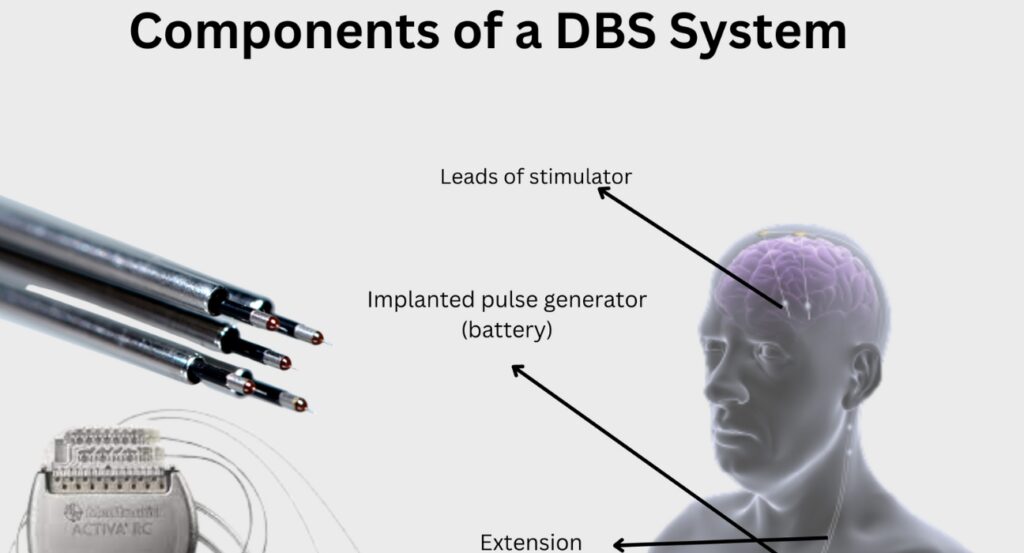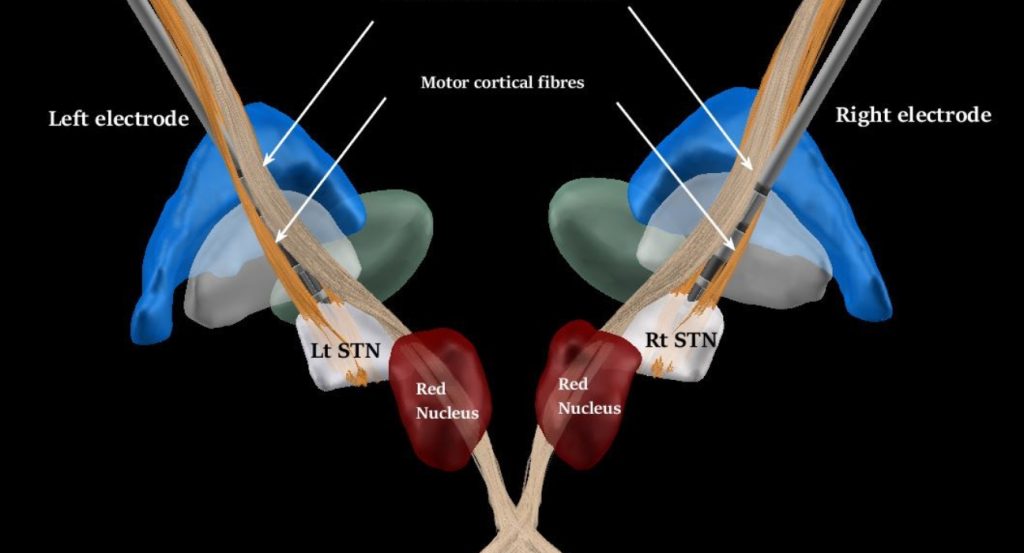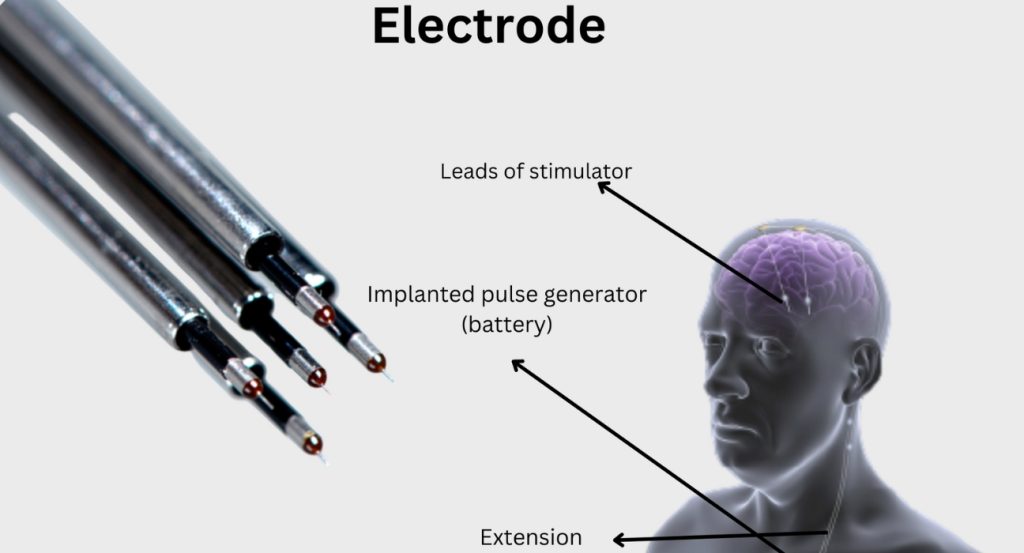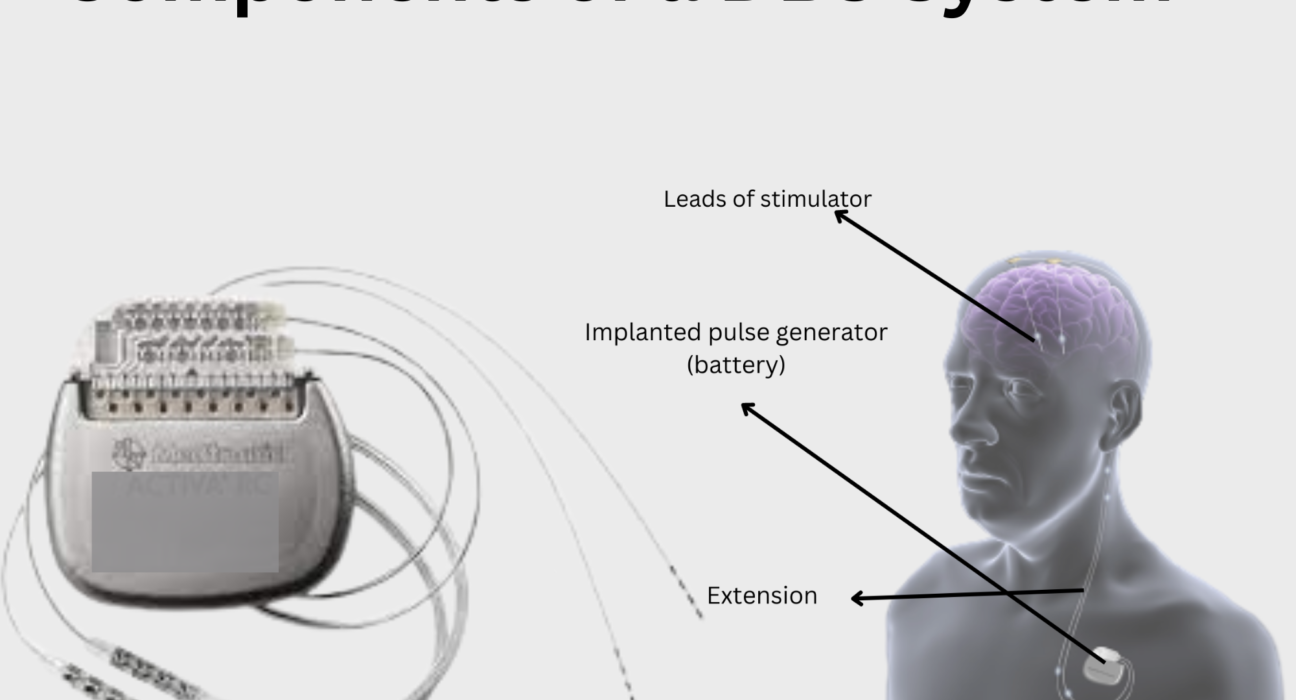
Deep brain stimulation (or DBS) is a surgical procedure that is performed to treat the debilitating symptoms of a wide range of neurological disorders, such as epilepsy, dystonia, Parkinson’s disease, and essential tremor.
DBS makes use of a surgically implanted, battery-run, medical device known as an implantable pulse generator (or IPG), which is quite similar to a heart pacemaker and nearly the size of a stopwatch, to successfully deliver electrical stimulation to specific regions in the brain that are responsible for the control of movement, which eventually blocks abnormal nerve signals that cause symptoms.
The DBS system comprises of three essential components: the lead, extension, and IPG. The lead (which is also called an electrode and is basically a thin, insulated wire) is successfully inserted via a small opening made in the skull and thereby implanted in the brain. The electrode’s tip is positioned within a specific region in the brain, based on the type of disorder. The extension is essentially an insulated wire that is passed beneath the skin of the head, neck, and shoulder, thereby connecting the lead to the IPG.
The IPG (also referred to as the battery pack) is generally implanted beneath the skin near the collarbone. In certain cases, implantation may be carried out lower in the chest or beneath the skin over the abdomen.
Let us take an in-depth look at the three components.
1. Electrode

Accurately guided by intraoperative neurophysiological mapping and neuroimaging studies, the stimulating electrode is inserted through a skull burr hole into a deep brain structure under local anaesthesia. The electrode is then anchored at the skull and connected by a lead extension threaded subcutaneously through the neck muscles and attached to the IPG, implanted in the wall of the chest, just below the clavicle.
The electrode is made of a plastic material and is approximately 1.1mm in diameter. It’s hollow in the centre and it is stiffened by stylet which is removed after the insertion of the electrode. The electrodes has several contact points, depending on the configuration of the electrode, there can be four contact points. there can be 8 contact points, there can be contact points with fractionated parts of contact points at certain places, and these are known as directional electrodes.
Selection of the electrode is dependent on the patient, his disease, and his ability to follow up for postoperative programming.

Paresh Doshi at Jaslok Hospital research Centre has a very individualised approach in this matter. He likes to keep things very simple but at the same time, use the technology to its best potential to ensure the best outcome for the patient. Another factor in selection of the right electrode is the cost involved and it is not necessary that all patients need to undergo expensive directional lead implantation even if they cannot afford the same.
The electrode used in DBS surgerycan be successfully interrogated and programmed percutaneously through the use of a handheld device that is placed over the IPG. Several electrical settings can be eventually manipulated: the configuration of contacts in the voltage amplitude, quadripolar electrode, frequency, and pulse width.
2. Extension Wire

The extension wire is made of inert plastic, this helps prevent any infection. The extension wires are paired with the electrodes and have to be of the same device company as the electrodes. The extension wire is also insulated and successfully passed beneath the skin of the head, neck, and shoulder, thereby eventually connecting the electrode to the IPG. Some extension wires have a slightly built-in elasticity, which increases the comfort of the patient whilst neck movements. Besides, the wires have sufficient length, so when implanted in children, there is no concern of the children outgrowing the length of the extensions.
3. IPG Or Neurostimulator
The implantable pulse generator (or IPG), which is also known as a neurostimulator is a programmable pacemaker that is powered by batteries to create electric pulses. It is placed beneath the skin of the chest just below the collarbone or in the abdomen. The IPG plays the role of an electrical generator. Continuous pulses of electric current from the IPG pass through the electrodes (or lead) and into the brain.
There are several types of ITC from rechargeable to non-rechargeable and from those look to open new systems. Once again, the selection of this is very individually oriented and based on the year and affordability of the patient. The good part of this is that most of the IPGs are interchangeable, i.e. you can have one companies electrodes and other companies IPG.
The placement of the neurostimulator takes place under the administration of general anaesthesia so that the individual is asleep. The team of surgeons inserts the neurostimulator under the outer layers of the skin, generally just below the collarbone, and on some occasions in the abdomen or chest. The extension wire from the lead is then successfully attached to the neurostimulator.
To Sum It Up
Deep brain stimulation (or DBS) is a brain surgery carried out to implant a device that continually sends electrical signals to brain regions that are responsible for body movement. Electrodes are placed deep within the brain and are then connected to a stimulator device. Similar in function to a heart pacemaker, a neurostimulator makes use of electrical pulses to further regulate brain activity. Deep brain stimulation surgery can help in reducing the symptoms of stiffness, tremor, slowness, as well as walking problems caused by certain diseases and illnesses such as Parkinson’s disease, essential tremor, or dystonia. Successful surgery allows patients to reduce their intake of medicines substantially as well as improve their quality of life.
References:
- https://www.ninds.nih.gov/deep-brain-stimulation-movement-disorders#:~:text=The%20DBS%20system%20consists%20of,area%2C%20depending%20on%20the%20disorder.
- https://www.sciencedirect.com/topics/nursing-and-health-professions/deep-brain-stimulator#:~:text=The%20deep%20brain%20stimulator%20device,(IPG)%2C%20or%20battery.
- https://www.hopkinsmedicine.org/health/treatment-tests-and-therapies/deep-brain-stimulation#:~:text=The%20leads%20are%20connected%20with,leads%20and%20into%20the%20brain.
- https://www.aans.org/en/Patients/Neurosurgical-Conditions-and-Treatments/Deep-Brain-Stimulation
- https://mayfieldclinic.com/pe-dbs.htm


Leave feedback about this